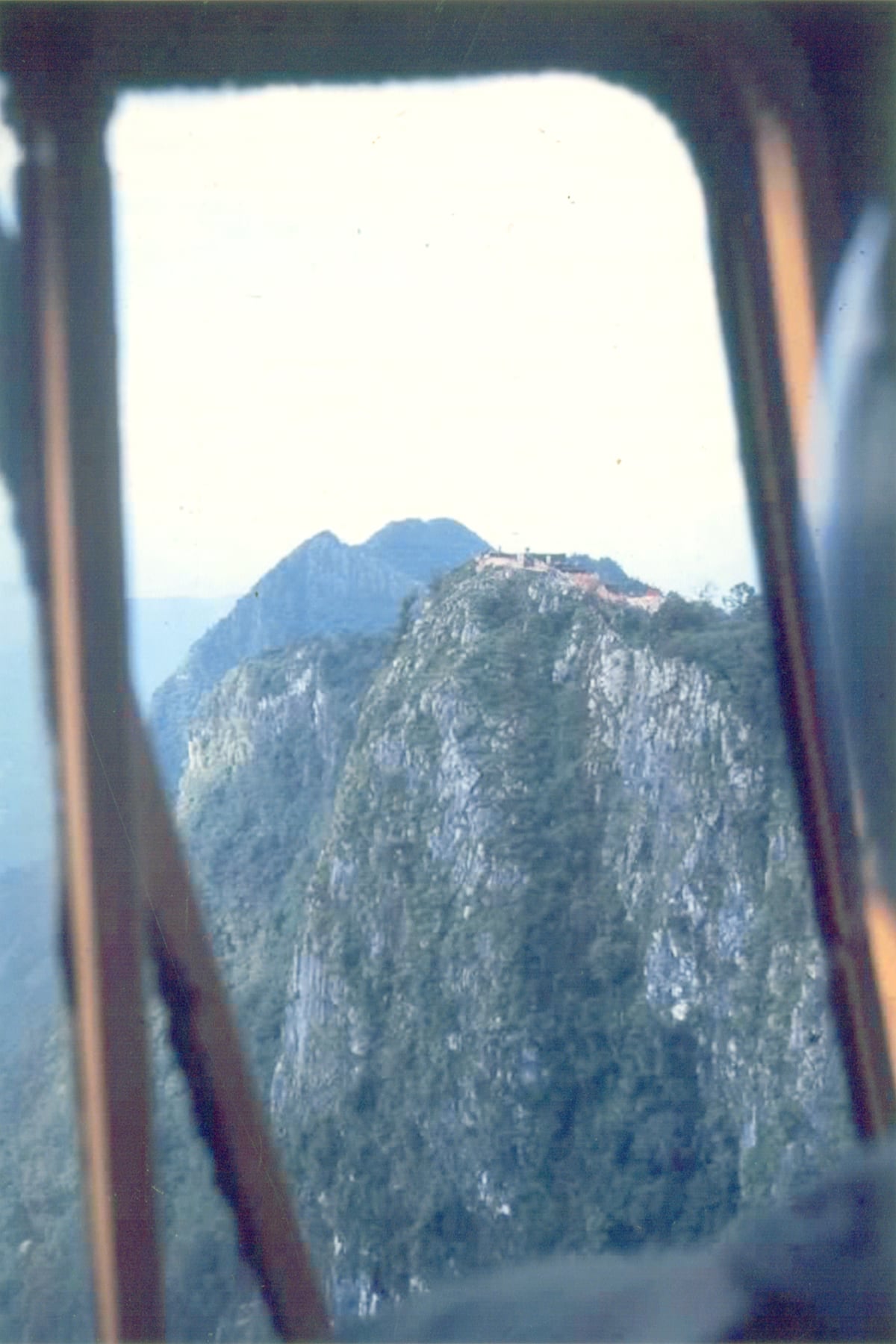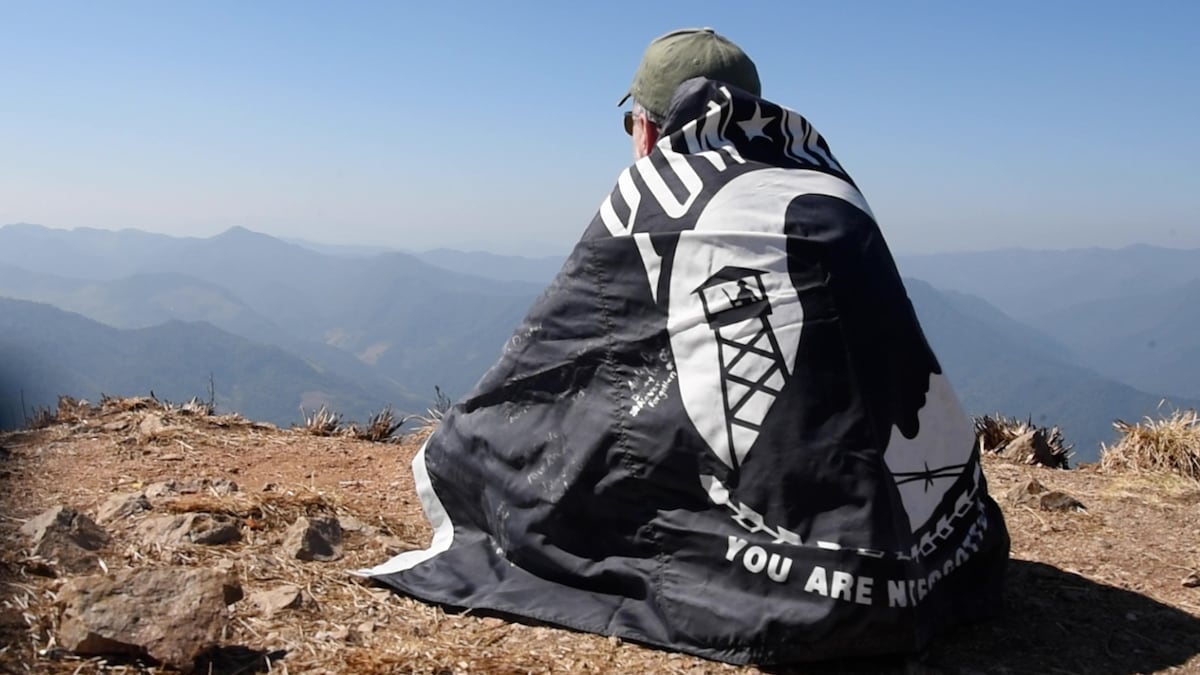In just one week in February 1968 America would suffer the highest casualties of the Vietnam War — from North Vietnam’s Tet Offensive, the battles of Hue and Quang Tri and the siege of Khe Sanh, the news out of southeast Asia was very bad to dismal.
But it wasn’t even the full picture.
For decades, the battle of Lima Site 85 — a top-secret American tactical air navigation radar site atop at 5,800-foot-high mountaintop 15 miles from the North Vietnamese border — would remain secret, unreported.
While “officially neutral,” Laos helped to pit communist Pathet Lao rebels backed by North Vietnam against the U.S.-supported royal Laotian government, which received assistance from CIA paramilitary advisers, Thai mercenaries and fighters from the Hmong mountain tribes.
The U.S. ambassador to Laos, William H. Sullivan, was reluctant to further violate supposed Laotian neutrality and forbade American troops to defend the Lima 85 radar site despite an enemy response that was sure to come, writes historian Don Holloway. On his initial survey of the site in July 1966, 7th Air Force mission coordinator Lt. Col. Robert C. Seitzberg gave its crew “six months if they were lucky.”
And come they did.
On the night of March 10-11, 1968, under cover of a massive artillery and infantry assault on the mountain, a team of North Vietnamese sappers scaled the cliffs, overran the radar site and, according to Air and Space Forces Magazine, killed more than half of the Americans they found there.
“We had intended and planned for a long time to liberate the Pha Thi area,” wrote Maj. Do Chi Ben of the North Vietnamese Army in a 1996 Vietnamese-published book about the raid. “In 1966, in addition to sending a reconnaissance element to prepare the Pha Thi battlefield, [Northwest Military Region headquarters] gave particular attention to developing and training a sapper [commando] team that would practice deep penetration and methods of attacking targets atop karst [limestone] mountains.”
On Aug. 11, 2025, 57 years after the battle, the Defense POW/MIA Accounting Agency has announced the recovery of Air Force Master Sgt. James Henry Calfee, then 26, of Boling, Texas.
The DPAA announcement states that more details on the Calfee identification will be released once his family is fully briefed, but the release appears to be delayed by the government shutdown.
In June, DPAA announced that the remains of three others who fell in the battle on the mountain had been identified: Tech. Sgt. Donald Kennebunk Springsteadah; Staff Sgt. Henry Gerald Gish; and Tech. Sgt. Willis Rozelle Hall.
After accounts of what happened in defense of the mountaintop TACAN (Tactical Air Navigation) site were finally declassified in 1988, Calfee’s valor atop the sheer cliff of the Phou Pha Thi mountain was finally recognized.
The Calfee was posthumously awarded the Silver Star in 2012 for his actions in the firefight that resulted in the deaths of 12 Airmen — the single worst ground combat loss for the Air Force in the Vietnam War.
Calfee was wounded in the initial attack on the site but continued to fire on the enemy, his citation reads. “Wounded and continuing to use his personal weapon, he drew many of the enemy forces away from another team located on the side of the mountain. His individual act of bravery, at the sacrifice of his life, ultimately enabled five of his comrades to reach the rescue helicopter at daybreak.”
By drawing away the enemy, Calfee enabled Air Force Chief Master Sgt. Richard Loy Etchberger, then 25, of Hamburg, Pennsylvania, to get several of the wounded on the mountain ledge onto a helicopter hoist. Etchberger was the last to be lifted out but he was struck by a rifle round just after being pulled aboard the helicopter and died before the helo could reach medical help. Forty-two years after his selfless actions, Etchberger was awarded the Medal of Honor at a White House Ceremony in September 2010.
The North Vietnamese cadre’s 1996 account of the battle by the People’s Army of Vietnam grudgingly allowed that a rescue helicopter managed to lift several Americans off the ledge while the attacking force sought to regroup.
The account stated that “one helicopter dropped a line down near the TACAN site and rescued three wounded enemy. We were tangled up in the mountain, so we fired on it without hitting it.”
On March 11, 1968, Ambassador Sullivan sent a cable to the State Department on the fall of Lima Site 85: “It appears we may have pushed our luck one day too long in attempting to keep this facility in operation.”

In all, a total of 12 U.S. personnel serving with Detachment 1 of the 1043rd Radar Evaluation Squadron, were killed or listed as missing and presumed dead. Calfee was among the missing until a recovery operation on the mountain in northern Houaphan province identified material that allowed for Calfee’s name to be removed from the list of the missing.
Airmen “sheep dipped” into civilians
The identifications of Calfee and the three others gave a clearer picture of what happened, and why, in what has been described as a “battle above the clouds” on Phou Pha Thi mountain that ended one of the oddest and most secretive U.S. military operations of the last century.
It began with a now-declassified April 1967 memo from Army Gen. Earle Wheeler, then chairman of the Joint Chiefs of Staff, to Defense Secretary Robert McNamara urging approval for the placement of advanced TSQ-81 radars and Air Force personnel to run them at Lima Site 85 to give U.S. bombers and attack aircraft all weather precision targeting.
Wheeler was wary of violating the 1962 Geneva agreements signed by the U.S. barring foreign militaries from neutral Laos, but he suggested a way around the prohibition that would put Air Force technicians at Lima Site and also give them a semblance of what spies would call “plausible deniability” if things went wrong.
“If it became necessary, in the interest of Laos political considerations, these personnel could be placed under ‘shallow cover’ (i.e., wear civilian clothing, use civilian titles and identification documents, and be supported by a local contractor as are the TACAN personnel at the site) in order to conceal their identity as military personnel,” Wheeler’s memo said. In the ranks, the process of instantly transforming military personnel into civilians was called “sheep dipping.”
The plan concocted by the high command led the Air Force to summon its best enlisted technicians to Barksdale Air Force Base in Louisiana where they were asked to volunteer for the Lima Site 85 mission and sign papers resigning from the Air Force. Now that they were civilians, they were also asked to sign more papers making them nominal employes of the Lockheed Aircraft Corp.
The deal was that they would be brought back into the Air Force once the mission was completed and, if they were killed or went missing in Laos, their families would get full military benefits. The volunteers, and even their wives, were sworn to secrecy about what and where the mission was. To keep up the ruse, the volunteers wore civilian clothes on the site and were mostly unarmed.
It was an open secret in Saigon that the U.S. was bombing sections of the Ho Chi Minh trail in Laos with CIA operatives on the ground and using the CIA-operated Air America cargo flights in an effort to prop up the shaky government of Prince Souvanna Phouman. However, President Richard Nixon maintained the fiction that no U.S. troops were on the ground in Laos and none had been killed.
In a lengthy March 1970 statement, Nixon said he felt compelled to counter “grossly inaccurate” media reports that “American ground forces are engaged in combat in Laos and that our air activity has had the effect of escalating the conflict.” He ignored the loss of life at Lima Site 85, stating “No American stationed in Laos has ever been killed in ground combat operations.”
For years, the families of those missing at Lima Site 85 were given only the barest and misleading details of what had happened — just that their loved one was missing in action, body not recovered, somewhere in Southeast Asia.
“We didn’t know any of the details about what happened to Dad,” Cory Etchberger, the son of Medal of Honor recipient Richard Etchberger, said in May 2018 remarks to airmen at Joint Base Elmendorf-Richardson in Alaska on his father’s commitment to service. “We didn’t talk about it. We knew better. Nothing was ever said. No memorabilia or photos were displayed, except for a sole photo that Mom kept on her bedside table.”
“The story I was eventually told was that he was killed in a helicopter crash somewhere in Southeast Asia, and I believed that story for another 18 years,” Cory Etchberger said.
In June 1996 testimony before the House subcommittee on military personnel, Ann Holland, the wife of Tech Sgt. Melvin Holland, relayed how she was informed that her husband was missing in action.
“I received a telephone call one afternoon in the middle of a cub scout meeting and was told that the mountain had been overrun and my husband was missing in action,” Holland said. “A few men had been rescued but a number of others had not been recovered. I was told I could tell no one, not my husband’s sisters, my children, no one. If I said anything and it got out to the press I could be causing my husband’s death.”
In the September 2010 White House ceremony for the posthumous Medal of Honor award to Chief Master Sgt. Richard Etchberger, President Barack Obama noted that the secrecy surrounding the 1968 battle on the mountaintop in Laos had long delayed the presentation of the nation’s highest award for valor.
Obama told Etchberger’s three sons that “today your nation finally acknowledges and fully honors your father’s bravery. Because even though it has been 42 years, it’s never too late to do the right thing. And it’s never too late to pay tribute to our Vietnam veterans, and their families.”
The site where Etchberger and the other Airmen fought to defend the radar outpost in 1968 is now a tourist attraction with metal stairway leading to the summit. In February of this year, Rick Holland, the son of missing Melvin Holland, climbed the 1,100 steps of the stairway to reach the summit of Phou Pha Thi on a visit that coincided with a DPAA recovery operation.
Once atop the mountain, Holland draped himself in the POW/MIA flag and shouted to the horizon: “I’m here Dad,” according to a DPAA release.
He later told DPAA team members that ”I’ve gone most of my life questioning — is my Dad proud of me? I hope so. I live my life to make him proud, and to honor him and the other men. I’m here, Dad, I came here for you.”
Read the full article here


